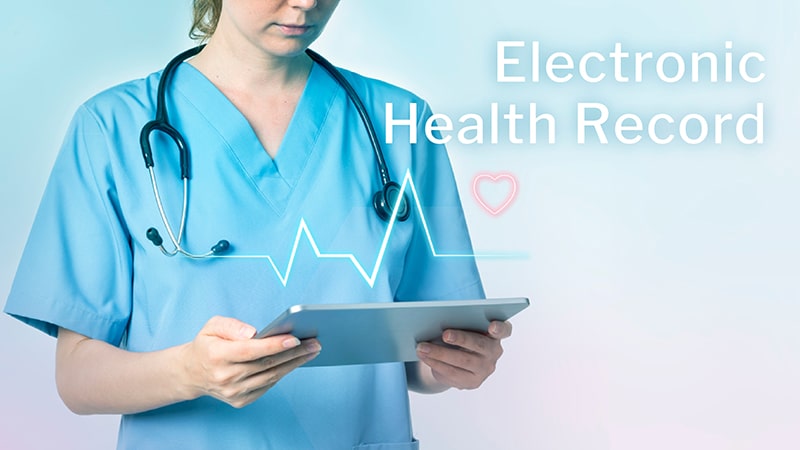 Data collection and management in clinical research involves gathering variables pertinent to the research hypotheses and using it to generate high-quality, reliable, and statistically sound results from clinical trials. Clinical researchers collect both primary data from surveys and interviews and secondary data from paper records and electronic health records (EHRs). Medical transcription outsourcing plays a key role in ensuring high-quality, accurate EHR data for statistical analysis. With the widespread adoption of electronic health records (EHRs), the data they contain has emerged as a valuable resource for clinical researchers.
Data collection and management in clinical research involves gathering variables pertinent to the research hypotheses and using it to generate high-quality, reliable, and statistically sound results from clinical trials. Clinical researchers collect both primary data from surveys and interviews and secondary data from paper records and electronic health records (EHRs). Medical transcription outsourcing plays a key role in ensuring high-quality, accurate EHR data for statistical analysis. With the widespread adoption of electronic health records (EHRs), the data they contain has emerged as a valuable resource for clinical researchers.
What Data do Electronic Health Records Contain?
Electronic medical records (EMRs) contain medical and clinical data that is routinely collected during medical care in a specific practice, clinic or other medical setting. EMRs are digital versions of paper charts. EHRs contain all of the information in EMRs but go beyond one provider or setting. EHRs contain information from all the clinicians involved in the patient’s care and focus on the total health of the patient. Electronic records are sharable among authorized providers, health organizations and clinics.
An electronic health record (EHR) contains the following patient health information:
- Administrative and billing data
- Patient demographics
- Progress notes
- Vital signs
- Medical histories
- Diagnoses
- Medications
- Immunization dates
- Allergies
- Radiology images
- Lab and test results
Most organizations rely on medical transcription services to ensure accurate and timely EHR documentation. With the comprehensive medical information they contain, EHRs are an important tool for clinical researchers.
Benefits of Leveraging EHR Data for Clinical Research
Collecting clinical data manually via surveys is an arduous task. Moreover, the data collected would be limited to a specific population. Likewise, as claims data comes with a time lag, it may be an imperfect reflection of the actual status of a patient. Compared to these options, leveraging EHR data offers many advantages for clinical research:
- Accurate: EHR data is considered the best option for health research as it provide precise, real-time information such as demographics, bedside monitor trends, laboratory test results, procedures, medications, caregiver notes, imaging reports, and mortality – for a large population of patients.
- Better identifies the patient’s medical problems: EHR data enables better identification of the medical condition as it provides access to data elements such as lab results and vital signs that allow a diagnosis to be ascribed, even if that diagnosis was never made. The EHR also has a problem list which allows the provider to keep track of all the medical problems affecting the patient. With the EMR problem list, researchers can identify conditions which claims data may not be able to identify.
- Rich dataset: EHR datasets offer rich data for clinical research that includes lab results, vital signs, patient surveys, habits (smoking, etc), problem list, etc. Such information is extremely important for understanding the full health status of a patient, but not available in other data sources such as claims.
- Scope of patients: Another benefit of EHR data is that it covers the clinical information on all the patients in a provider’s group, including uninsured patients. That’s why clinical analysis done to improve the health status of a provider group’s full patient population needs to rely on EMR data as its source, rather than claims data (www.optum.com).
- Timely data: Providers enter data into the EMR during the patient encounter or soon after it (with the help of a medical transcription service). This ensures real-time generation of the patient’s medical data. So, evaluating data from the EMR can provide fast insights.
- Helps support equity research: In a JAMAop-ed, author Elham Hatef, MD, MPH from the Johns Hopkins School of Medicine and Bloomberg School of Public Health, noted that the use of real-time EHR data can help support health equity research (www. com, 2021). To highlight this, Hatef referenced a study that leveraged individual-level EHR data to prove its hypothesis that the neighborhood food environment was associated with increased type 2 diabetes risk among veterans in multiple community types.
Challenges of Using EHR Data for Clinical Research
As EHR software is accessed directly by physicians to record the details of their encounters with patients, it is a rich source of data for clinical research. However, reports indicate that using this data comes with certain challenges:
- Lack of structured data collection, standardization and aggregation across sites was a major problem, according to a study that evaluated responses from a survey of research teams conducting clinical trial projects.
- Using EHR system and building a reusable EHR data collection infrastructure takes time and effort.
- EHR data would be a reliable source of data for research only if all of the physicians involved in the patient’s care use EHRs. Any services provided by a physician not using these electronic records will not be reflected in the data.
- If the EMR system is not connected to the pharmacy, it may not confirm whether a patient filled or refilled his/her prescription.
- EHR interoperability is essential to support research.
Partnering with an experienced medical transcription service organization can help providers ensure that EHR systems have the high-quality data necessary for use in clinical trials. Studies are exploring how to integrate EHRs from heterogeneous resources and generate integrated data in different data formats or semantics to support various clinical research applications (www.sciencedirect.com). EHR optimization for health data interoperability is also important to support clinical research. Integrating research with clinical care can lead to higher rates of clinical trial participation within a health system, improved health outcomes, lower cost of care, and more satisfied patients, according to experts. The COVID-19 pandemic also demonstrated the importance of such integration to provide better health options for all patients.


